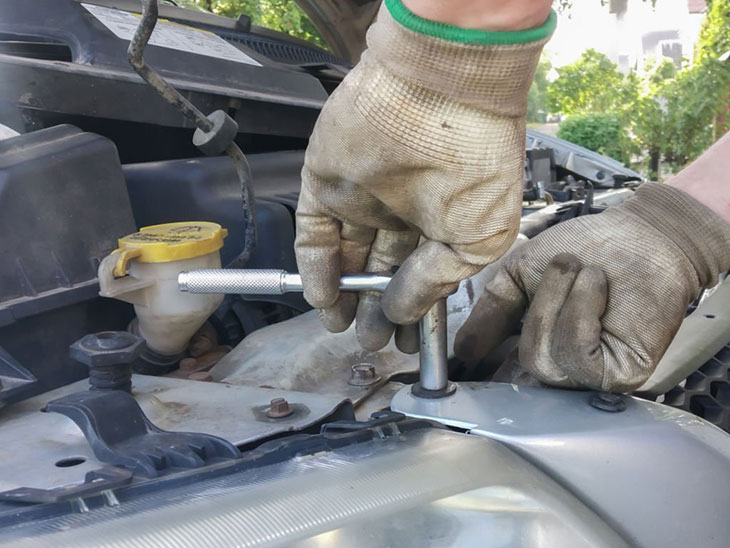For anyone operating a diesel engine, whether it’s a truck, tractor, or a cozy generator, the question often arises: can you fuel a diesel while it’s running? At first glance, the matter might seem straightforward, but a closer inspection reveals a spectrum of considerations that compel us to reassess our assumptions. The implications of this question stretch far beyond mere convenience; they touch upon safety, engine integrity, and operational efficiency.
Let’s initiate our exploration by understanding the mechanics of diesel engines. Unlike gasoline engines, diesel engines operate under a different combustion principle. They rely on high compression to ignite fuel, which generates greater efficiency and power. This fundamental difference is pivotal when discussing the implications of refueling while the engine is running.
First and foremost, safety is paramount. Refueling typically involves transferring flammable fuel from one container to another. Doing so while an engine is in operation can potentially expose the fuel to ignition sources, as diesel engines can run quite hot. Additionally, static electricity and fuel vapors raise the stakes significantly. Even in the most controlled environments, the unpredictability of an open fuel delivery system creates an inherent risk. The consequences of a fire or explosion can be catastrophic.
Moreover, let’s consider the stipulations enforced by many manufacturers and regulatory bodies. Most diesel engines come with explicit guidance advising against refueling while in operation. Such recommendations are often derived from rigorous testing and incidents that have underscored the potential hazards. Beyond safety, neglecting these recommendations may lead to warranty complications, leaving owners vulnerable to costly repairs or replacements.
Now, let’s examine the operational aspect of diesel engines. When refueling, one may inadvertently introduce air into the fuel system. This is particularly concerning in diesel engines, where air can cause cavitation and lead to inefficient fuel delivery. A running engine creates a vacuum that can draw in air along with the new fuel, leading to potential performance issues. The presence of air bubbles can disrupt the fuel injectors, resulting in misfires, decreased performance, and, in certain cases, significant engine damage. Thus, while the thought of a quick fuel top-up mid-operation may appear appealing, the ramifications require keen consideration.
But what if you find yourself in a desperate situation? If you’ve ever been out in the wild or on a construction site, the temptation to pop open the fuel cap while the engine is running can be overpowering. You might think there’s no harm in doing so, especially if it allows you to save time. However, it’s crucial to reevaluate. Risks abound not just from potential fires but also from the long-term repercussions on your engine’s health and efficiency.
Shifting gears, let’s delve deeper into the mechanics of refueling strategies. If you’re in a situation where you’re running low on fuel, the best course of action is to power down your diesel engine. While it may seem counterintuitive, it’s a restorative process that allows for a clean fueling experience, devoid of the complications mentioned above. When your engine is at a stand-still, the fuel delivery system can operate more efficiently, without the unwelcome intrusion of air. Fueling your diesel engine while it’s off ensures that you’re priming it for optimal performance the next time you start up.
Furthermore, the act of turning off your engine introduces another vital aspect: the proper assessment of your fuel gauge and understanding your engine’s fuel consumption patterns. This knowledge empowers you to plan your refueling strategy more effectively, reducing the chances of encountering these predicaments in the first place. Optimal preparation and proactive maintenance can save you countless headaches down the road.
We must also contemplate the environmental implications associated with fueling practices. Many fueling stations now employ systems designed to reduce spillage and vapor emissions, reflecting a growing awareness of ecological responsibilities. Refueling while the engine is active could compromise these systems, leading to increased emissions and fuel wastage. Adopting responsible fueling practices not only honors the integrity of the diesel engine but also contributes to broader sustainability efforts.
In concluding our exploration, the answer to whether you can fuel a diesel engine while it is running is a resounding no — but this rejection opens the door to a myriad of better practices. Understanding the potential safety hazards, the risks to engine performance, and the broader environmental impact shifts our perspective significantly. Embracing proactive refueling strategies, enhanced awareness, and a commitment to sustainable practices can transform what might have been an innocuous query into a profound opportunity for elevating our operational proficiency.
Ultimately, thoughtful engagement with your diesel engine not only enhances its life span and efficiency but also nurtures a culture of safety and responsibility within the larger automotive community. Consider each fueling opportunity as a chance to reflect, engage with your equipment’s specific needs, and foster a deeper understanding and respect for the powerful machines that serve so many diverse functions in our lives.
